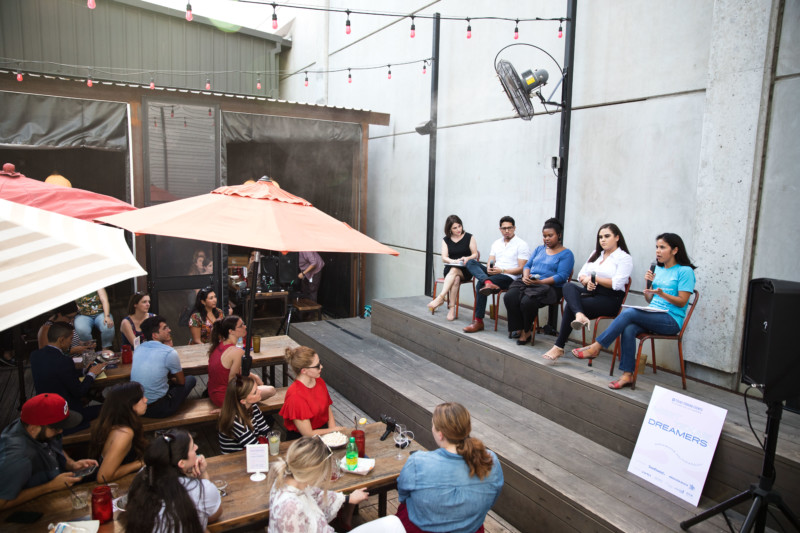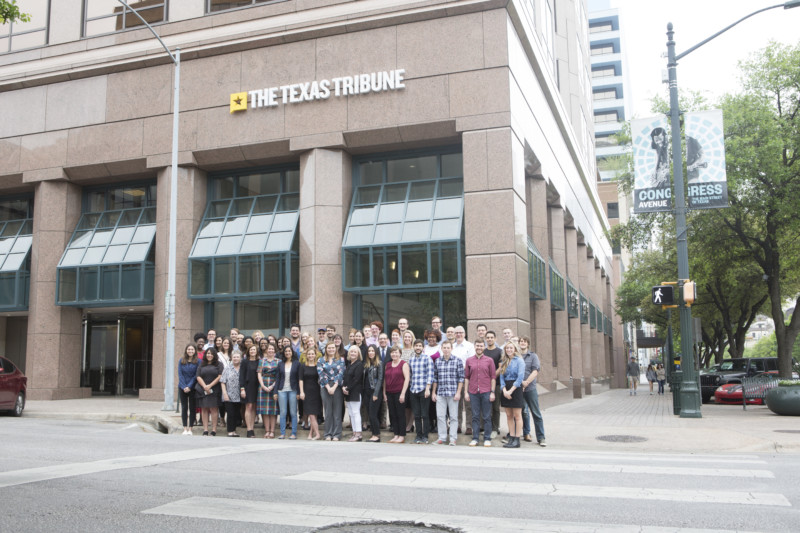Sign up for The Media Today, CJR’s daily newsletter.
About a month before the Texas Tribune launched in 2009, media reporter Jack Shafer wrote a piece for Slate delineating the numerous problems inherent in nonprofit journalism—namely, that nonprofits lose money on purpose, and thus, have to take handouts, which, Shafer says, “come with conditions.” Shafer, who then blithely referred to CEO Evan Smith as “picking the pocket” of venture capitalist John Thornton, also spelled out that audience development is always secondary to advocacy in this sort of business model:
Commercial outlets may reflect their owners’ views, but this tendency is always tempered by the need to attract readers and viewers. Nonprofit outlets almost always measure their success in terms of influence, not audience, because their customers are the donors who’ve donated cash to influence politics, promote justice, or otherwise build a better world.
Of course, the Texas Tribune’s base, composed of members scattered across the state and beyond, also includes deep-pocketed professional philanthropists. But just as the Tribune has evolved from a niche publication for hardcore policy wonks to a mainstream, establishment publication, its lofty goals for influence and audience aren’t at odds with each other; they’re inextricably linked.
ICYMI: A travesty in Myanmar
“I’ve been overwhelmed by the fact that they are liberated to make news judgment the only judgment,” says Siva Vaidhyanathan, a journalist who worked at the Austin American-Statesman, Dallas Morning News, and Fort Worth Star-Telegram and now directs the University of Virginia Center for Media and Citizenship. Coverage decisions seem “based on the importance of the story to the people of Texas,” says Vaidhyanathan, “not based on parochial or political or financial concerns.”
In 2017, the Texas Tribune put on 62 events, including the wildly popular Tribune Fest, opened by a keynote from then-democratic Senator Al Franken and closed by Texas Senators Ted Cruz and John Cornyn; this year, the site will do $2 million in revenue on events alone. Bolstered by partnerships with the likes of The New York Times, Time, Cosmopolitan, and ProPublica, a monthly average of 1.9 million people read reporting that originates in the Tribune newsroom. Its stories regularly appear in local newspapers free of charge, and its reporters crop up on local news stations just as often. If you ask an Amazon Alexa for news about Texas, Tribune multimedia reporter Alana Rocha will read it to you.
“It has exceeded my expectations. I wasn’t sure it would survive and thrive,” says Vaidhyanathan. “You never know with a new model. I was confident knowing who they hired that they would do best to produce quality journalism. Whether there would be enough money would be the challenge.”
RB Brenner, a former Washington Post editor who until recently directed the University of Texas at Austin’s School of Journalism, says the Tribune has “made very impressive strides with deeper investigative work: Pulitzer-level, enterprise investigation” since he first came to Austin in 2009.
“They are doing that better and more consistently,” says Brenner of the Tribune’s enterprise work. “There’s still a ways to go there, but they are absolutely on the right path.”
Perhaps most importantly in an unforgiving media climate, the Tribune expects to raise $9 million dollars between donors, grants, and members in 2018, and anticipates more than $1 million more in revenue compared to 2017. It has been in the black since 2012, and has posted double-digit percentages in revenue growth every year since its inception.
Compare that to Texas’ local legacy publications, whose cuts have devastated the ranks of reporters in the state. In May, 14 newsroom staffers were let go at the San Antonio Express News. The Dallas Morning News, where Texas Tribune Editor in Chief Emily Ramshaw cut her teeth, has already cut five positions this year, citing the “hard realities” of publishing and shrinking revenues. In March, GateHouse Media purchased the Austin American-Statesman; last month, the company offered voluntary buyouts to 200-plus employees. Already, Publisher Susie Biehle and Editor Debbie Hiott have taken the offer, and thirteen newsroom staffers are expected to follow. Next month, the American-Statesman will stop publishing Ahora Sí, its Spanish-language weekly.
Nearly a decade since its inception, the Texas Tribune has defied the doubts of nonprofit journalism skeptics and is no longer seen as an anomaly. Now, Smith and company are shaking everything up again.
Today, the publication released its first-ever strategic plan, the fruits of a nine-month information-gathering process that involved every member of the staff and conversations with media companies from the Texas Observer and the Dallas Morning News to Spotify. The Texas Tribune hopes to double and diversify its audience, double its membership program, and double down on multimedia and technology.
According to the 3,000-plus-word manifesto, “our core readers are not yet representative of the state’s fast-changing demographics, the audience that’s critical to our—and the state’s—future.” Indeed, as newsrooms shrink in direct proportion to the immense growth of the state, increasingly the Tribune acts as Texas’ mouthpiece—for oilmen in Karnes County, families on the border, both sides of the aisle in the Capitol. While it has succeeded so far, there are large segments of the Texas population that are underrepresented, as readers, subjects, and members.
“So,” Smith says, “We’re going to fuck shit up.”

“Dreamers” share their experience of growing up undocumented during a Texas Tribune summer salon series aimed at young Texans. Photo by Callie Richmond for The Texas Tribune.
AS SMITH AND RAMSHAW saw the 10th anniversary of the publication approaching—the site turns nine on November 3 of this year—they realized it was time to think about the next decade. “I don’t think that there was any one thing where it was like, ‘Oh, shit, we gotta do something,’ Smith says. “I don’t think we’ve ever, at any time we’ve been in business, felt panicked or felt like somehow we woke up and we were like, ‘What did we do last night?’”
Instead, the anniversary was what Smith calls a clarifying moment, a chance to make a bold statement both internally and externally. The crux of the document hinges on one central objective: to “develop specific audience and editorial strategies aimed at reaching and reflecting Texas’ fastest-growing populations: young and ethnically diverse Texans.”
The Tribune’s strategic plan makes the case that everyone everywhere should care about the state that produces the most crude oil, has the most prisoners and people living without healthcare, shares the longest contiguous border with Mexico, and contains six of the 20 biggest cities in the country.
The Tribune has already employed some of the editorial strategies hinted at in the document, says Ramshaw. In the past few months, the publication launched two new closed Facebook groups—This is Your Texas and Campus Correspondents, respectively—to bring young Texans into the Tribune fold and tailor coverage to specific demographics. This summer, the Tribune rolled out its Summer Salon Series for young Texans; the first, held August 18 at Austin southern restaurant Olamaie, attracted an audience (average age: 25) whose members munched on a biscuit buffet while they discussed family separation on the Texas border. There are corresponding pledges to diversify the Tribune staff; the strategic plan identifies Spanish-language skills as “a greater priority in hiring” going forward.
“When you first start doing things that are more audience focused, there obviously are questions raised, and there are people in the newsroom who wonder if this is what they were hired for,” Ramshaw says. “But this newsroom has been a really fast adopter of the understanding that if we don’t have an audience, who are we speaking to?” The Tribune’s goal, says Ramshaw, is to “explain Texas to the rest of the world.” If the newsroom isn’t representative of a large swath of Texans, then how credible can the Tribune’s message be?
Explaining Texas—perhaps the most provincial and politically complicated state in the country—to someone in Idaho who may not care about the Top 10 Percent Rule or the state attorney general’s securities fraud case, is an arduous task. The Tribune’s strategic plan makes the case that everyone everywhere should care about the state that produces the most crude oil, has the most prisoners and people living without healthcare, shares the longest contiguous border with Mexico, and contains six of the 20 biggest cities in the country.
Publishing partnerships have been particularly helpful in disseminating the gospel of the Tribune. Recent collaborations include a joint venture with Cosmopolitan magazine for a piece on sex trafficking and another with the Weather Channel for a special report on Rockport, a Gulf Coast community that was decimated by Hurricane Harvey. There are plans for an as-yet-announced project with the Vox property Curbed. Certain issues, like family separation and Beto O’Rourke’s November challenge for Cruz’s Senate seat have nationwide appeal regardless of region, and the Texas Tribune is leading the way in coverage on those fronts. The next step, then, is grabbing and retaining an audience in-state and across the country that will turn to the Texas Tribune on a daily basis, show up to the growing slate of events, and, of course, give money via memberships and donations.
To fund this endeavor, the Tribune wants to raise an extra $10 million by its 10th anniversary. The innovation and capacity-building fund, as it is referred to, will live beside the $8.7 million operational budget, and come from philanthropic asks, a few of which have either been fulfilled or are already in the ether.
“Revenue itself requires revenue, and there’s things we need to test,” Smith says. “We’re raising a separate pot of money for that purpose. It is not an endowment, it is not to sit on the shelf. This is money to be deployed in service of this strategic plan. Honestly, I’d like to raise more than $10 million.”

Tribune staff photographed earlier this year outside their Austin office. Photo by Steve Moakley for the Texas Tribune.
THE TRIBUNE HAS REPORTERS in El Paso, Dallas, the Rio Grande Valley, and Washington, DC, and a more limited presence in San Antonio and Houston; most of its reporters are based in Austin. Brenner, the former UT Austin journalism school director, sees the Tribune’s geographic constraints as one possible obstacle to its audience growth plan.
“It’s going to be hard to go into places like Houston and Dallas, big cities that still have very reliable, ambitious news organizations, and get people to think of you as the go-to source,” Brenner says.
“The Dallas Morning News is still an excellent newspaper. The Houston Chronicle—especially the coverage of Harvey and its aftermath—there’s still good journalism being done there. Texas is so big, and particularly those big cities,” he says. “How do you become impactful enough when there’s already good journalism there and you’re inevitably significantly outnumbered?”
While Ramshaw says she hopes to get boots on the ground in cities where the Tribune hopes to increase its base, Smith says there are more ways to increase audience engagement than stationing beat reporters around the state.
“This is statewide news organization, not a network of city organizations,” he says. “We view—correctly, I think—the impact of statewide decisions on the people of the state as not limited to people in cities. How we get more readership is to be more conscious and deliberate about making that connection in the Capitol in Austin and in Washington.” Such coverage, says Smith, will be “married to events on the ground in communities, where we bring elected officials onstage and hold [them] accountable in real-time.”
Smith also balks at the idea that this strategic plan is a signal that the Texas Tribune is looking for statewide domination.
“We have no competitors,” he says. “We only have current and future collaborators. Said another way, we hang separately or survive together.” When the Tribune launched, Smith says, they were seen as competitors to the establishment. Since then though, he says, “I think that whole traditional competitive mindset has broken down.”
Ramshaw acknowledges the Tribune’s plan will need modification in the coming years as digital publishing trends evolve. Still, in 2018, the Tribune feels more and more like the establishment. By 2025, the Tribune’s plan may function as a blueprint for more publications; it’s happened before, after all. And because of its mode—not in spite of it—journalists like Ramshaw who have worked on both sides of the profit divide are reaping the rewards and passing them along to a new class of media members.
“I feel like the Tribune gave me an opportunity to reinvent myself as a journalist, to play a role in reinventing this industry, and now I get to run a newsroom where all these journalists are only thinking about the journalism. They aren’t worried that they’re about to be laid off. They aren’t worried about the bottom line of their news organization,” she says. “I’ve been given that gift, and in return I get to turn around and give it to these guys. It is so fucking cool.”
ICYMI: In Texas, a local public radio show defies the ‘Google it’ age
Has America ever needed a media defender more than now? Help us by joining CJR today.



